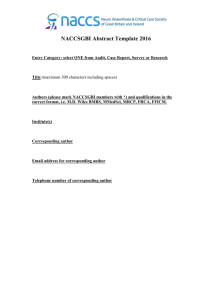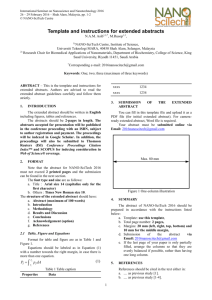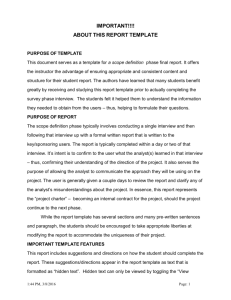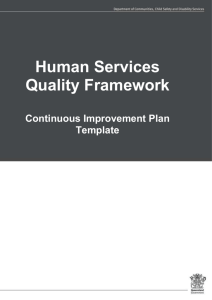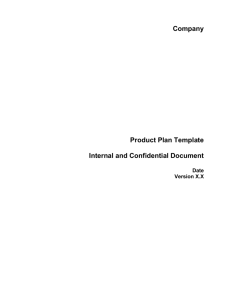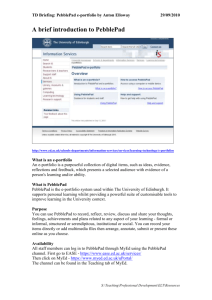template provided
advertisement
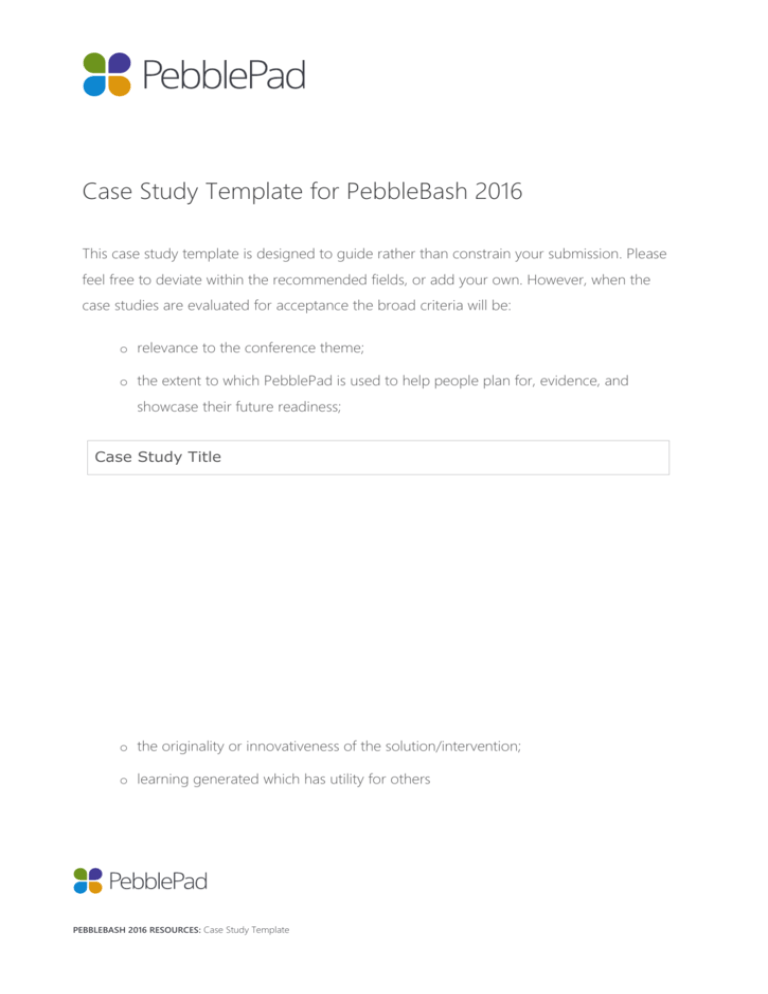
Case Study Template for PebbleBash 2016 This case study template is designed to guide rather than constrain your submission. Please feel free to deviate within the recommended fields, or add your own. However, when the case studies are evaluated for acceptance the broad criteria will be: o relevance to the conference theme; o the extent to which PebblePad is used to help people plan for, evidence, and showcase their future readiness; Case Study Title o the originality or innovativeness of the solution/intervention; o learning generated which has utility for others PEBBLEBASH 2016 RESOURCES: Case Study Template Provide a descriptive title for your case study Authors Provide author names and affiliations The Organisation At which organisation(s) did this take place? The faculty, school or department Was this located in a particular school, department, across the organisation, or beyond it? Context In this section you should describe the context for the case study e.g. discipline/profession area, desired outcomes, drivers – internal and external, learner characteristics, etc. PEBBLEBASH 2016 RESOURCES: Case Study Template The Problem What was the issue or problem you wanting to address? What were the drivers for change? What were the outcomes you were aiming for? The Approach What did you do? What was your solution/intervention? How was PebblePad used to address the identified problem? The Results What were the outcomes of your intervention? What evidence do you have that the identified issues were addressed and the desired outcomes achieved? Lessons learnt What did you learn from this? What barriers did you face? What would you do differently next time? What can others learn from this? PEBBLEBASH 2016 RESOURCES: Case Study Template In brief How is PebblePad helping users plan for, evidence, and showcase their future readiness? [3-5 dot points] References Should conform to the APA guidelines for citations and references – see examples below this table for guidance. PEBBLEBASH 2016 RESOURCES: Case Study Template A note about referencing All case studies should conform to the APA guidelines for citations and references. The following examples are provided for clarity; however, authors should consult the APA guidelines for specific formats, indentation, in text referencing, etc. Articles: Moreno, R., & Valdez, A. (2007). Immediate and delayed effects of using a classroom case exemplar in teacher education: The role of presentation format. Journal of Educational Psychology, 99(1), 194 – 206. Books: Bruner, J. (1990). Acts of meaning. Cambridge, MA: Harvard University Press. Chapters: Watson, C.E., Zaldivar, M., & Summers, T. (2010). ePortfolios for learning, assessment, and professional development. In R. Donnelly, J. Harvey, & K.C. O’Rourke (Eds.), Critical design and effective tools for elearning in higher education: Theory into practice (pp. 157-175). Hershey, PA: IGI Global. Web Pages: Anderson, J.R., Reder, L.M., & Simon, H.A. (1995). Applications and misapplications of cognitive psychology to mathematics education. Retrieved from http://act.psy.cmu.edu/personal/ja/misapplied.html PEBBLEBASH 2016 RESOURCES: Case Study Template
